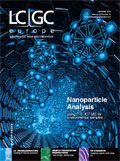Event News
Event News
6th International Symposium on the Separation and Characterization of Natural and Synthetic Macromolecules (SCM-6)
The 6th International Symposium on the Separation and Characterization of Natural and Synthetic Macromolecules (SCM-6) will take place on 6–8 February 2013 in Dresden, Germany. SCM-6 will bring together a variety of scientists who share an interest in the separation and characterization of large molecules. The target audience includes specialists from analytical chemistry, polymer science, and life-science communities. SCM-6 creates a platform for scientists from diverging backgrounds and with different current perspectives to interact, discuss subjects of mutual interest, and to discover new synergies.

The conference will take place in the Congress Centre Dresden close to the historical heart of the city. An exhibition of instruments and consumables will take place in the exhibition hall with a spectacular city view. The exposition will be actively integrated with the poster sessions and social programme, catering and receptions.
The programme will feature a limited number of invited plenary, state-of-the-art and keynote lectures on a variety of recent topics, challenges and developments in the field. Tutorials are intended to bring non-specialists up-to-date on important topics in the field of polymer separation and characterization.
The scientific programme will feature a number of the very best speakers in the field. The organizers also aim to provide talented young researchers with the opportunity to present their work. During SCM-6, the scientific advisory committee will select the most innovative contribution in the field of separation and characterization of natural and synthetic macromolecules. The award will be presented during the closing session on the last symposium day.
Participants are invited to contribute to the programme by submitted oral and poster presentations. Abstracts for contributions can be submitted by via the webpage www.scm-6.de. The online registration is open. Two short courses with renowned experts in the field will be held before the conference:
Short course 1: Monday 4 February 2013: Field-Flow Fractionation of Natural Polymers –Kim Williams (USA) and Lars Nilsson (Sweden).
Short course 2: Tuesday 5 February 2013: Liquid Chromatography–Mass Spectrometry – Jana Falkenhagen (Germany) and Christopher Barner-Kowollik (Germany).
For centuries Dresden has been praised as one of the most beautiful cities in Germany. Visitors to Dresden are impressed by the baroque architecture, the harmony between the architecture and the river, and by the picturesque surroundings. The work of inspired master builders, sculptors and architects endowed the city with edifices of rare splendour. There is also great traditions in the fields of music, theatre, arts and sciences create a unique atmosphere.
Contact:
Leibniz-Institut für Polymerforschung Dresden e. V.
Hohe Str. 6, 01069 Dresden, Germany
Tel: +49 351 4658-282
Fax: +49 351 4658-214
E-mail: scm-6@ipfdd.de
Web: www.scm-6.de.
11–12 February 2013
2nd Stir Bar Sorptive Extraction Technical Meeting
Novotel Vaugirard, Paris, France
Organizers: Veolia Environment Research and Innovation
Chair: David Benanou
Tel: +33 1 34 93 8121
E-mail: david.benanou@veolia.com
Website: www.sbsetechnicalmeeting.com
10–14 March 2013
29th Symposium on Microscale Preparations
University of Virginia, Charlottesville, Virginia, USA
Organizers: UVa Foundation
Tel: (434) 960 6525
E-mail: MSB2013@comcast.net
Website: www.msb2013.net
17–21 March 2013
Pittcon 2013 Conference and Exposition
Pennsylvania Convention Centre, Philadelphia, USA
Organizers: The Pittsburgh Conference on Analytical Chemistry and Applied Spectroscopy
Tel: 412-825-3220
E-mail: info@pittcon.org
Website: www.pittcon.org
24–25 April 2013
Ion Chromatography 2013
Zabrze, Poland
Organizers: Institute of Environmental Engineering of Polish Academy of Science
Tel: +48 32 2716481
Fax: +48 32 2717470
E-mail: michalski@ipis.zabrze.pl
Website: www.ipis.zabrze.pl/en/conferences/65-planowane-ipi-pan
16–20 June 2013
HPLC2013 Amsterdam
Amsterdam RAI Conference Centre, Amsterdam, The Netherlands
Co-chairs: Peter Schoenmakers and Wim Kok
E-mail: hplc2013@caos.nl
Website: www.hplc2013.org
Send any event news to Kate Mosford kmosford@advanstar.com

New TRC Facility Accelerates Innovation and Delivery
April 25th 2025We’ve expanded our capabilities with a state-of-the-art, 200,000 sq ft TRC facility in Toronto, completed in 2024 and staffed by over 100 PhD- and MSc-level scientists. This investment enables the development of more innovative compounds, a broader catalogue and custom offering, and streamlined operations for faster delivery. • Our extensive range of over 100,000 high-quality research chemicals—including APIs, metabolites, and impurities in both native and stable isotope-labelled forms—provides essential tools for uncovering molecular disease mechanisms and exploring new opportunities for therapeutic intervention.
New Guide: Characterising Impurity Standards – What Defines “Good Enough?”
April 25th 2025Impurity reference standards (IRSs) are essential for accurately identifying and quantifying impurities in pharmaceutical development and manufacturing. Yet, with limited regulatory guidance on how much characterisation is truly required for different applications, selecting the right standard can be challenging. To help, LGC has developed a new interactive multimedia guide, packed with expert insights to support your decision-making and give you greater confidence when choosing the right IRS for your specific needs.

.png&w=3840&q=75)

.png&w=3840&q=75)



.png&w=3840&q=75)



.png&w=3840&q=75)











